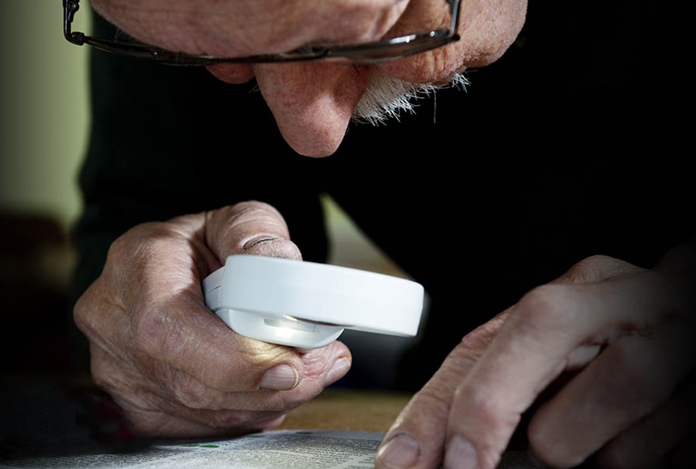
One of the most recognizable signs of aging is not necessary something you can see, it really is how well you can see. Most people above 40 years of age, experience some kind of vision loss. This condition might exacerbate with time.
Dr. Mehmet Oz shares a few preventive measures you must take to avoid most common causes of age-related vision loss. Read on to know most common causes that could lead to worsening of eye sight with age. Also, learn how you can prevent these conditions, in first place. Dr. Oz advises that a sudden change or pain in eyes warrants an immediate trip to an ophthalmologist.
Common Causes of Age-Related Vision Problems
Here are the common causes of age-related vision loss and ways to prevent them
1. Presbyopia: Presbyopia occurs when the eye’s lens loses flexibility and cannot focus on nearby objects. People suffering from presbyopia can notice that they can’t read newspapers, books close up and they have to hold them a bit farther away. You might require new prescription frequently, while all these changes really slow down after age 60.
Presbyopia is generally due to aging and much can’t be done for treating it. You might be prescribed bifocal lenses or a separate pair of glasses or contacts. Few people also might undergo laser surgery for some relief.
2. Diabetic Retinopathy: This condition occurs in people with diabetes as the chronically high sugar levels damage the blood vessels present in the eye. Generally, there are no early symptoms of diabetic retinopathy but as the condition worsens, you might experience strings of spots in the vision, empty or dark areas, blurred vision, or trouble in seeing colors. This condition usually affects both the eyes.
Thankfully, this condition can be avoided by keeping your blood sugar levels in check. Additionally, Dr. Oz also advises keeping your blood pressure and cholesterol under check, indulging in some physical activities for at-least 30 minutes each day, going for regular eye examinations and quitting smoking.
3. Age-related Macular Degeneration: It has been found that Age-related macular degeneration (AMD) is one of the topmost leading causes of age-related vision loss in Americans above 50 years of age. AMD is generally asymptomatic, and it leads to gradual loss of vision and you might need brighter light to read or a magnifying glass. A more common sign of AMD is that straight lines start appearing distorted or curved. Another dangerous kind of AMD is known as wet AMD, where a person experiences loss of central vision or sudden vision changes, in just one eye.
You can minimize your risk of developing AMD by quitting smoking, managing high blood pressure or cardiovascular diseases if any, consumption of diet that is antioxidants rich (spinach, kale, peas and broccoli). Consume nuts, fish and other foods that are rich in omega-3 fatty acids. Also, get your eyes regularly examined.
4. Glaucoma: It occurs if there is a pressure build-up in the eye leading to the damage of the optic nerve, which allows us to see. Glaucoma can be broadly categorized into two types: open- angle and acute-angle closure. Open-angle glaucoma is more common and gradually leads to loss of peripheral vision or a tunnel vision. Whereas, the acute angle glaucoma is indeed a medical emergency as it leads to vomiting, eye pain, blurred vision, vision loss, eye redness, halos around eyes or hardness in eyes. Dr. Oz warns that not taking care of both types of glaucoma can result in permanent vision loss.
To prevent permanent damage in your eyes, you must visit your ophthalmologist frequently. Also, use sunglasses and hats while you are out. Avoid any kind of eye injury by using eye protective wear while indulging in physical activities such as sports.
5. Cataracts: This eye disease is caused by clouding in the eye’s clear lens. It makes it look like you are seeing through a fog. Cataracts grow gradually and make the vision cloudy, dim or blurred. Your night vision might also suffer due to cataracts. Few people might become extremely sensitive to light or start seeing halos around the light sources. Fortunately, treatment of cataracts is possible and most of these can be successfully removed.
Dr. Oz recommends using sunglasses every-time you move out in the sun, quitting smoking, limiting your alcohol intake, and consuming an antioxidant rich diet to prevent most of these common eye conditions.










